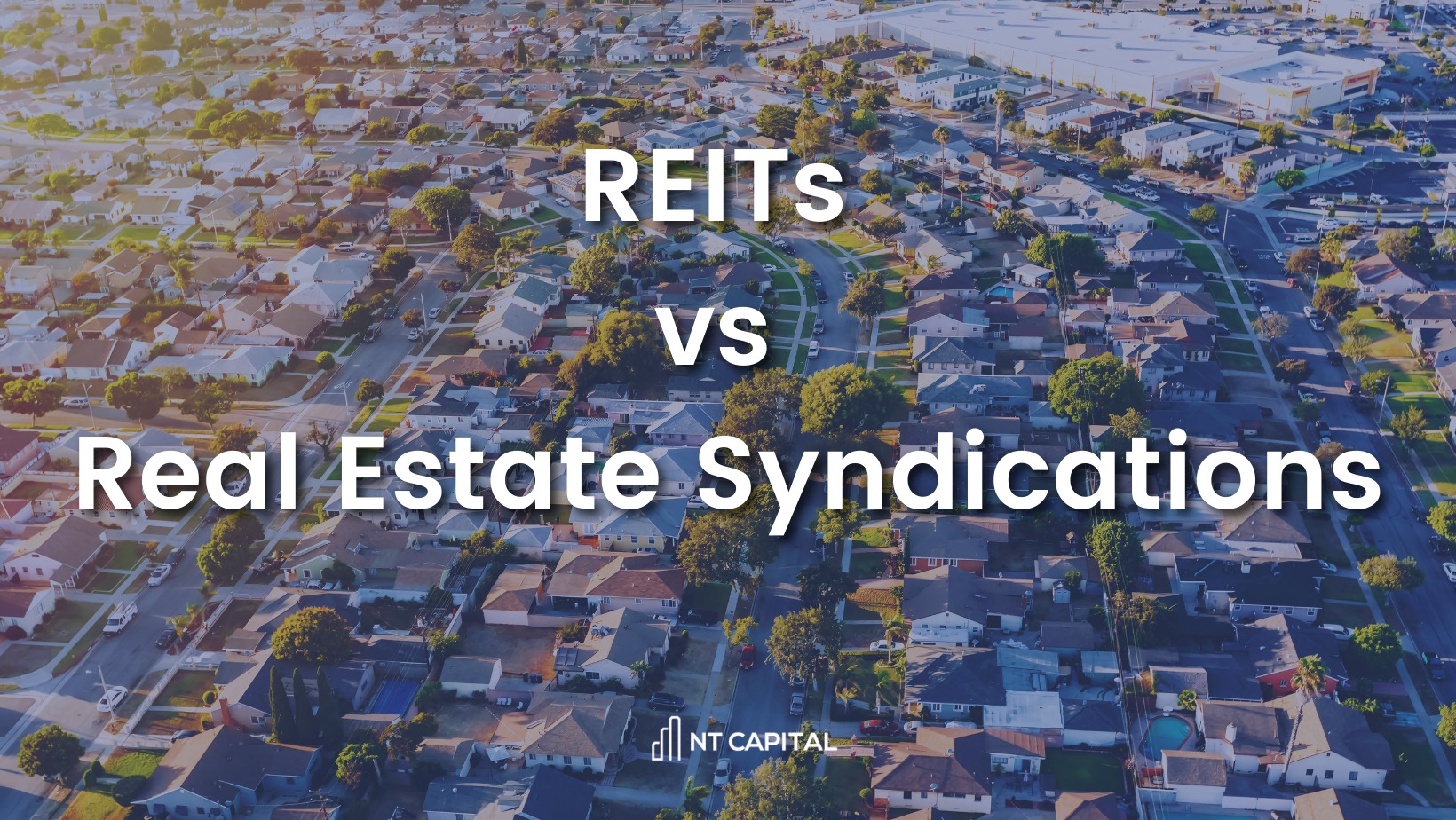Making Self-Directed IRAs Work For You with Kaaren Hall
Get to know self-directed IRAs and how you can make it work for you with the Founder and CEO of uDirect IRA Services, LLC, Kaaren Hall. With uDirect as a self-directed IRA administrator specializing in helping people take control over their retirement investments, Kaaren guides you to discover what IRAs are and how administrators help out busy professionals in comparison to asset custodians. She also breaks down the three steps to the process of making investments and the top misconceptions about self-directed IRAs.
Kaaren Hall from uDirect IRA joins us
Our guest is Kaaren Hall from uDirect IRA Services. uDirect IRA Services is a self-directed IRA administrator specializing in helping you and people like you take control over your retirement investments. With self-directed IRAs, you can invest your retirement in many assets outside of Wall Street. Kaaren, welcome to the show.
Thank you so much, Taylor.
Could you tell us a little bit more about your background in self-directed IRAs and what brought you to the show?
I went to college and got involved in radio. I was a radio announcer for a while and decided to get into real estate. I made that logical transition and went from there. I got engaged, married and became the trailing spouse. I got involved in mortgage loan servicing and I also did property management. I was a realtor for a year and mortgage loan servicing and then mortgage loan origination until the recession. That’s the point for everyone. Everyone has a story for that point in their lives. The mortgage industry changed and I needed too. Long story short, I got a job working for a self-directed IRA company and that was great. I worked there for a couple of years and then branched out on my own and opened uDirect IRA Services in 2009.
uDirect is a self-directed IRA administrator and not a custodian. What is the difference between an administrator and a custodian? Let’s get that out there because I’m very curious.
Custody is the asset. That’s a good way to put it. They’re like trust company or a bank. Typically, they’re trust companies. With a custodian, you’ve got cash management, you’ve got audits and you’re dealing with maybe even lawsuits. You have a lot of these things you have to deal with when you are custodian. When you’re an administrator, 100% of your time and the time of your staff can be devoted to providing customer service to your clients.
Most people that read this might have some familiarity with self-directed IRA investments. I invest in my self-directed IRA. Can you give us a super basic high-level overview to help get some of the people that maybe aren’t as familiar with self-directed IRAs up to speed? What is a self-directed IRA?
There’s a common misconception that a self-directed IRA is different from some other kind of IRAs. Understand that the IRS created IRAs. It’s been Gerald Ford who signed the IRS laws into effect in 1974. They went to effect in 1975. They create an IRAs. It didn’t create any special kind of IRA except traditional Roth, SEP, Simple, spousal-inherited IRAs. Whether or not they’re self-directed, it has to do with the asset that you’re allowed to carry and hold in that IRA accounts. Think of an IRA left on the pocket and maybe your IRA is with Charles Schwab although they’re only going to let them put stocks, bonds and mutual funds in that. The IRA bucket is the same regardless of who the custodian is. When it’s a self-directed IRA, then the bucket can contain real estate promissory notes, performing and not performing debt, precious metals, private stock, and lots of different kinds of asset classes. What makes it self-directed is the asset class sits inside the account.
Coming from a general brokerage account and coming from a stock investing background, I noticed that the fee structure and the account setup is entirely different from let’s say a Vanguard as a regular IRA custodian investing in stocks. That’s something I had to get used to. As a new self-directed IRA investor, what are we getting into as far as fees and setups? What does that all look like if we’re coming from Vanguard or Schwab or something like that?
Vanguard and Schwab are charging you on the back end. A lot of times you don’t see what they’re charging you. When you make a trade, they’re charging you. They may be taking 1% for assets under management. They’re taking a lot in the back end where you’re not writing a check and it’s not coming directly out of your account. It’s coming off the proceeds of your investments. With a self-directed IRA, the fees are all transparent. It’s what you’re charged up front. For us, it’s a $50 set up fee, a flat fee of $275 a year and some little charges for things that are excessive.
We do a lot of something or maybe a bounced check or you need something to FedEx or something like that. The fees are all up front and we don’t participate in the gains of the assets. Your IRA buys a house, sells it in five years and you make $100,000, we’re not taking a percentage of that gain. 100% of that gain is remaining in your IRA and not diminished by the tax. It’s tax protected, tax-free in a Roth, or tax-deferred in a different kind of account. We’re not participating in the gain of your assets like a Charles Schwab, a Northwestern Mutual or whomever each ride would be doing.
Something that I hear people say all the time when they’re talking about self-directed IRAs is you can grow your retirement tax-free. Is that true?
The devil is in the details. Click To TweetYes, it is true. In order to do that, you need to have a Roth IRA. It’s the newest kind of IRA. It was founded not that long ago. With Roth IRA, you contribute to it after the tax is done so you don’t get a tax write off for making a contribution. The proceeds from that seed money of your contribution are going to grow tax-free as long as you meet some qualifying conditions. Those conditions are you’re 59.5 and that you have had a Roth IRA for at least five years in your life. Once you open a Roth IRA, you start that clock in your life. Everybody, go out and open a Roth so your Roth clock starts. You meet those two qualifying events. You have a Roth IRA first. Secondly, you’re 59.5. Third, you’ve had a Roth for five years. That’s what needs to happen. Then the money comes out tax-free for life.
As far as placing money in investments, let’s say we’ve got money saved up. Converting from a 401(k) from a previous employer to a traditional IRA and then converting that over to a Roth IRA and incurring some tax burden there. Turning that into an investment in real estate syndication and working with a self-directed IRA administrator or custodian, what’s that whole process look alike to make that investment?
It’s a three-step process. First, you open the account. That involves filling out a form and providing a copy of the statement for your account. If you rolled over a 401(k), a copy of that 401(k) statement would be made. We’ve got a $50 set up fee, then we need a copy of your ID straightforward. Step one, open the account. It takes a day. Give us the information the same day you’ll get an account number and so forth. The second step is funding that account. You can do that in three ways. You can write a check and contribute. You might want to ask your tax person about how much you’re allowed to contribute. We do have some information on our website about it. The second way you can add money to the IRA is to transfer from IRA to IRA. We have a transfer form as part of our application. The third way is a rollover where you have a previous employer plan. You contact the previous employer and say, “Please roll my money over from this account to this IRA,” and they’ll do it for you.
With the transfer, you’ll fill out our documentation. For a rollover, you’ll fill out their documentation. A transfer is an IRA and rollover is a previous employer. Step one, open the account. Step two, fund the account. You fund by contribution transfer or a rollover. Step three is investing. When you go to invest, we need the supporting documentation. We need the contract. We want to see the deal in and the meat of it. We’ll need a direction of investment form, which is a very simple few questions about the transaction and how much money we have your permission to transfer the money or send it out. We want to look at the documentation because the devil is in the details. We want to take a look and see if you are committing a prohibited transaction. Those are the three steps: open, fund and invest. At that point, 100% of the proceeds from that asset must go back into the IRA that owns the asset. 100% of the expenses of that asset must be paid by the IRA. You’re not paying any IRA expenses out of pocket. Don’t do that. It’s a prohibited transaction and it’s game over for you.
From your professional experience as an IRA administrator, what are maybe the top three to five most common misconceptions about self-directed IRAs?
One is that you can go to a bank and get a mortgage loan for an IRA on property. You can’t do that. The reason is that there is no recourse against an IRA. A bank won’t make that loan, but if an IRA can borrow one, that’s great. It’s called a nonrecourse loan, which can have different meanings. In this case, it’s a loan made not to you, the person, but to the IRA account itself. The IRA borrows money. Usually, these nonrecourse lenders want more skin in the game. It’s maybe a 60-40. You’ve got 60% IRA and 40% loan or something like that. What you need to know about this special kind of lending that’s also the misconception is that there is a tax and you better know because the self-directed IRA experience is a game.

If I say, “Taylor, we’re going to play a game.” You’re like, “What are the rules? I’m going to win this game.” If you want to win the self-directed IRA game, you know the rules and you understand that your IRA can be taxed and it costs money. Your IRA can also be taxed when it invests in an active business. You get tax advice about that and you go on the IRS’ website, which is IRS.gov and you look at Publication 598. You read about it, talk to your tax person about tax advice but know that an IRA and even a Roth can be taxed.
From my observations and based on my own personal experience, that’s a big misconception that I’ve seen. Because the distributions from your IRA can be tax-free, people take that to mean that all activity of the IRA is then tax-free regardless as to whether or not you take out debt or invest in any particular business.
We’ve got to call and someone wants to invest in franchises. We said, “Your IRA can certainly do that. However, when your IRA invest in the business, it can lead to Unrelated Business Income Tax, UBIT.” We told them to check that out first.
I would also be concerned in that case of them potentially committing at a prohibited transaction. They’re investing in a franchise that maybe they’re going to work in or maybe they are trying to employ some of their children or something along those lines. They’re not going to have an arm’s length transaction with the IRA and a franchise.
Let’s talk about prohibited transactions. This is the game of keep away. You keep away from doing these things. One good rule of thumb is with the self-directed IRA, you keep everything on arm’s length. There’s no self-dealing. You don’t have any personal benefit. Your IRA doesn’t make a loan to yourself. Your IRA doesn’t make a loan to any disallowed people. These disallowed people that could disallow your IRA, they are your lineal ascendants and descendants. They’re your parents and grandparents and their spouses. It’s you and your spouse. It’s your children, your grandchildren and their spouses. It disallows your IRA. Your IRA doesn’t buy a house and let your dad live in it, but your IRA could buy a house and your uncle could live in it. It’s counterintuitive. You wouldn’t think that that would be the case, but it is. You must know the rules to win the game.
Kaaren, what is the best investment you ever made?
You must know the rules to win the game. Click To TweetThe best investment I ever made has to be in my children. This is a show about investing and making money and so forth, but why do we make money? The reason we make money is for our life. College tuition and so many of the things are the best investment. As far as making an investment, I got this house in Kansas. It’s a pretty sweet deal. I got it at a good time and a low price. It’s a rental. It’s holding that thing and getting that passive income. Passive income or mailbox money is cool.
Through this process and through my own investing career, I’ve met a lot of very successful investors and they would give very similar answers related as it pertains to investing in their children’s education or investing in relationships. Amongst highly successful people, that’s a very common answer. It’s the whole point of getting out and making money. What is the worst investment you ever made?
The biggest mistake I ever made was selling my Starbucks stock. I bought Starbucks at the IPO. I lived in Seattle at the time and I sold it. I can’t even an imagine how much it will be worth right now. I did sell it in order to have cash for a home purchase. It’s the very first time I bought a home. I used it for a good cause but I wish I had that stock.
What is the most important lesson that you’ve learned in investing?
Do your due diligence. If you’re investing with someone, make sure you know these people. Talk to people who have invested with them and don’t think that due diligence is what you do up front. Remember that due diligence is what you do on the backend. For example, if your IRA buys a house. Did the link get a report? It’s the same thing about if your IRA is making a secure note. Was the note recorded so you have a lien on the property that we should not be paid back? Cleaning up the details on the back end is the most valuable thing that an investor should do.
If you have any stories from your own profession or from your own experience, what are some of the crazier things that you’ve seen as an IRA administrator?

We had this one young man who took his IRA and he bought sports tickets. He bought tickets for the Super Bowl. If you would have gone to the Super Bowl and use those tickets, that would have been a prohibited transaction because you would have received a personal benefit. He sold his tickets at a profit and he used a third-party agent to do that. The tickets and the proceeds went back in his Roth tax-free for life. That was cool.
It’s almost like investing in precious metals or something.
Do you realize that when you buy a seat at a venue, that is real estate? A seat is a real estate.
It’s a lease on the seat for the term of the game.
Another one I would throw out there would be mango trees. When you buy these trees when they’re seedlings and you invest and as they grow, so does the opportunity to make money. They’re then eventually harvested and cut down and whatever they do with a particular tree you’ve invested in. That’s also an unusual thing we don’t see a lot of. That is an asset we say is not administratively feasible for us because it’s difficult to value assets. How do you know how much that tree is going to worth? Hard to value assets are difficult to custody.
There’s a lot going around these days with people investing in coffee farms in Panama, but they’re investing in the dirt. You’re saying these tree investors are investing in that tree right over there. It’s not the ground under it, but the actual tree growing out of the ground. That’s very interesting. I’ve never come across that and I can see that it would be very difficult to value from an administrative standpoint.
Cleaning up the details on the back end is the most valuable thing that an investor should do. Click To TweetIt’s always been a willing seller will sell for or the willing buyer will pay.
You need a particular set of skills to figure that out. While we have you here, is there anything else that you’d like to share with the audience about self-directed IRAs or IRAs in general and why people should be using them?
There’s this huge deficit between what Americans have and what we need to retire. We’re coming up on a crisis that no one talks about so I’m going to talk about it right now. Save for your retirement. I know we’re all living hand to mouth and doing what needs to happen. Our kids are taken care of and we have a good quality of life, but you’ve got to prepare for later. After you read this blog, go contribute to your IRA. Go do that for your future self. Your future self will thank you. Invest and prepare for the future. Let’s say you have $100,000 in an IRA and you think, “I’m set for retirement.” It’s a lot of money and to some people it’s everything, but if you took that $100,000 and you’re 59.5, you’re going to live into the 86.5 so you’re going to take this even monthly distribution from your $100,000 pool of money. You’re only going to have under $400 a month to live on and that’s not enough. Be prepared, save and invest.
It’s very exciting to be a self-directed IRA investor as well because as one syndicator put it to me, it’s patient money. As an investor with a self-directed IRA, I have more patience with that money than I do with funds that I invest out of a cash account. In the best-case scenario, I’m not going to be able to touch that money for another 30 years. I can be very patient with where I invest it, where I place it and then making a return.
Patience is fantastic because then you need to hold onto it. You’re not going to cash as I did with my Starbucks stock. You’re going to have it there when you’re ready to retire.
There’s no temptation to draw off of the returns and buy a car or something silly like that. Kaaren, thank you for joining us on the show. Where can our investors and our audience get in touch with you?
Look at our website. First off, it has all the information, which is UDirectIRA.com and you can email us at [email protected]. That’s a great way. For our number, it’s (866) 538-3539. All those ways will reach us.
To all the audience out there, thank you. Please subscribe to Passive Wealth Strategies for Busy Professionals wherever you get your podcasts. If you’re enjoying the show, please leave us a rating on iTunes and a comment. That’s a huge help. It helps get other audience coming to the show. If you know anyone that would benefit from all of the content that we’re bringing to you to grow your wealth, please share the show with them and bring them into the fold.
Important Links:
- uDirect IRA Services
- IRS.gov
- UDirectIRA.com
- [email protected]
- iTunes – Passive Wealth Strategies for Busy Professionals






